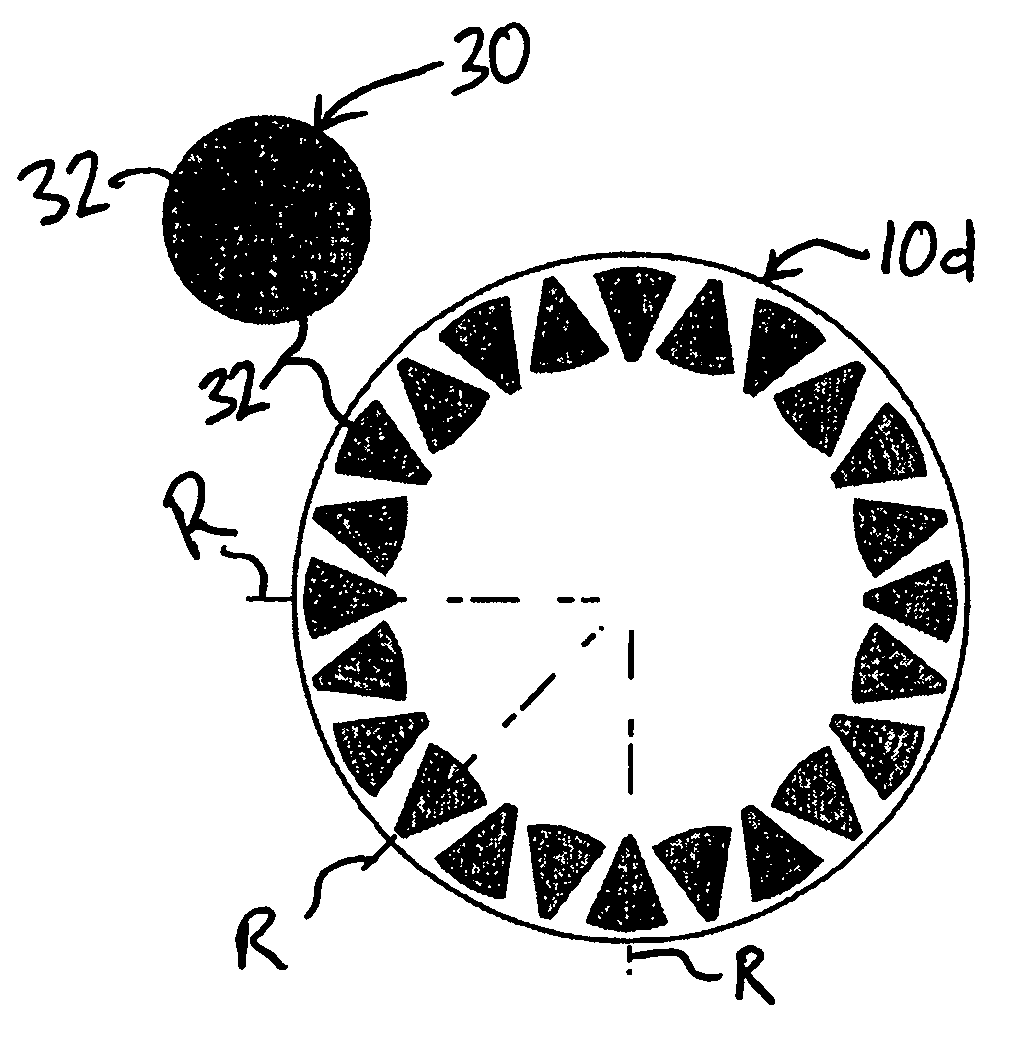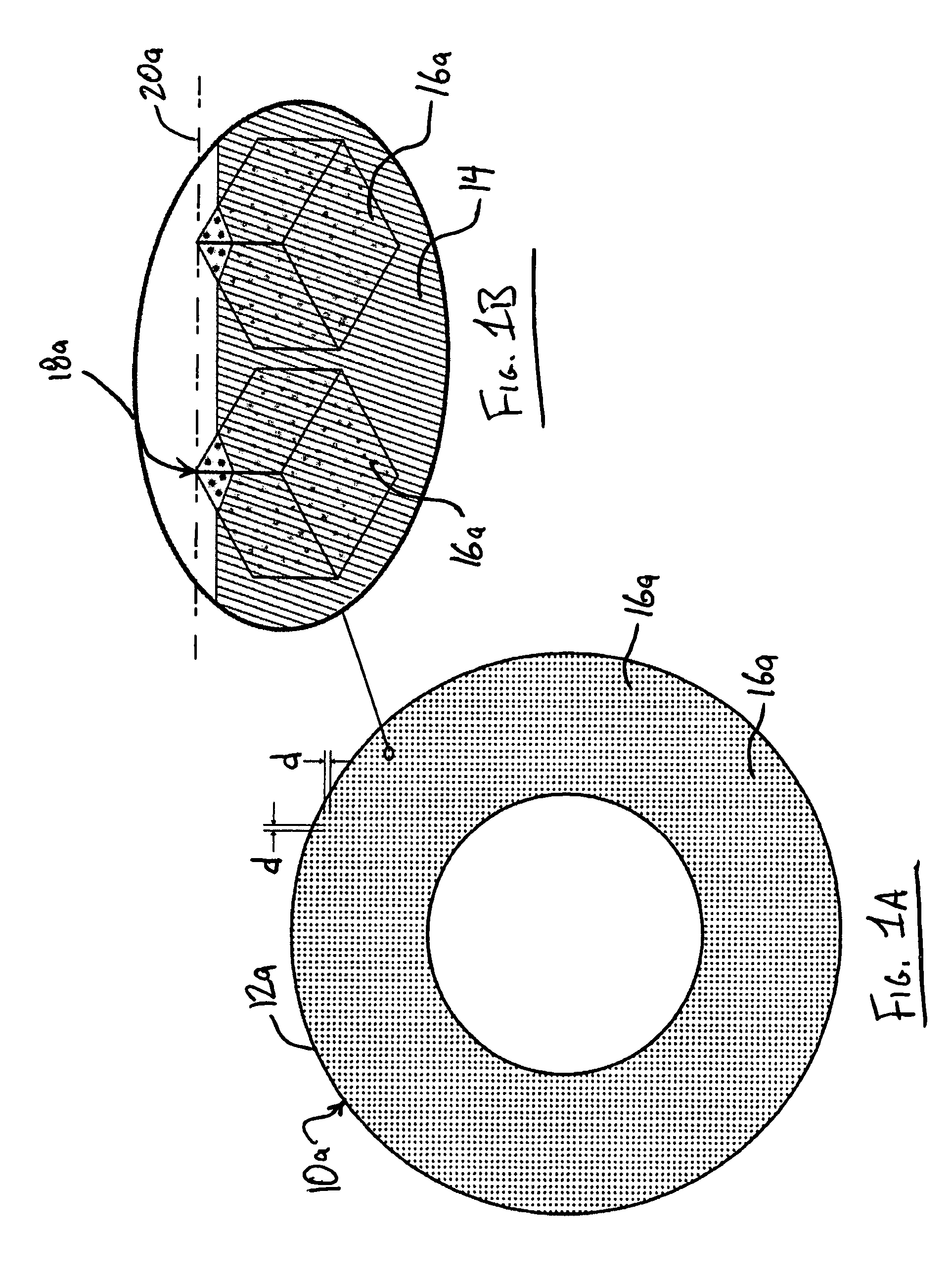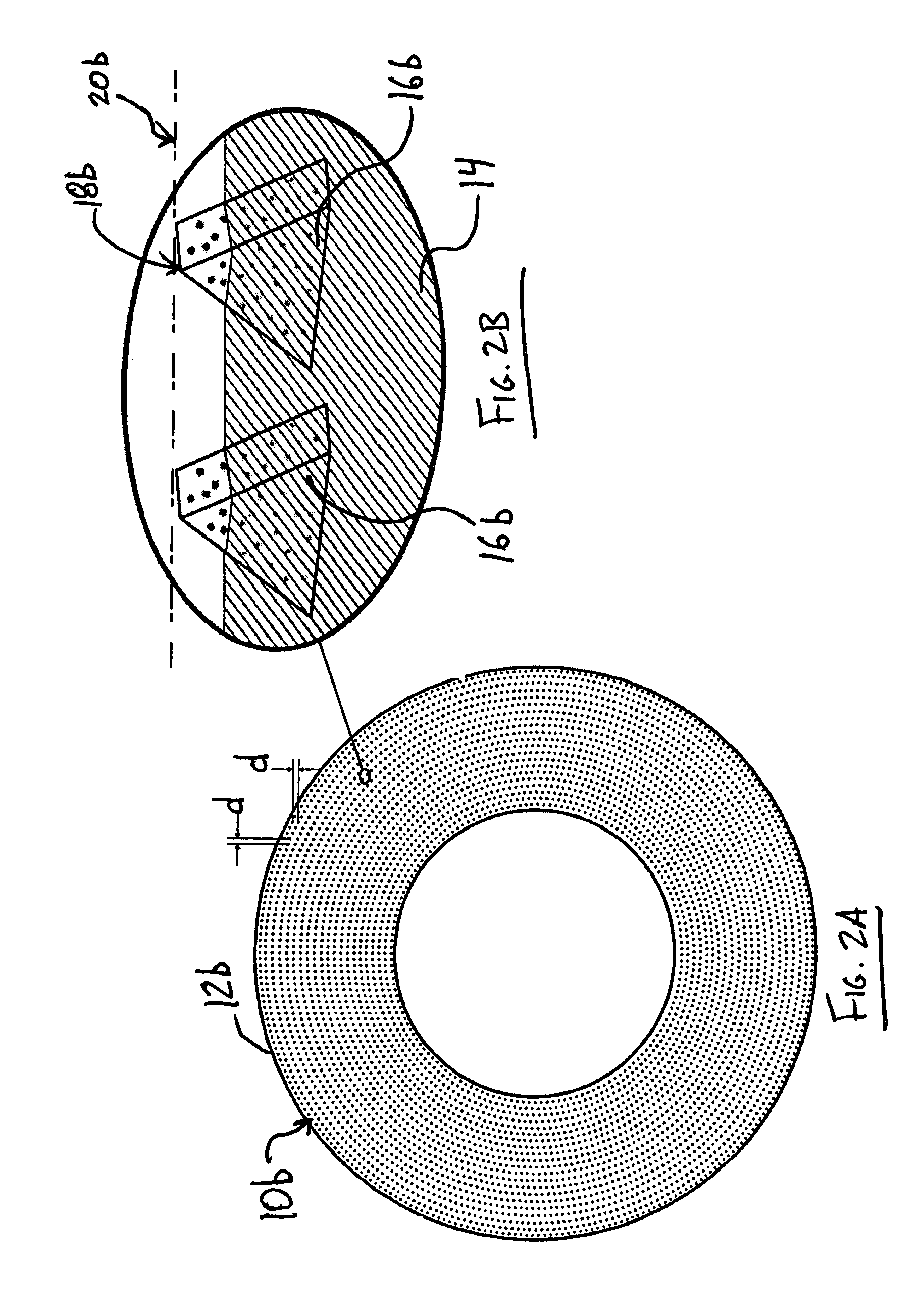Superhard cutters and associated methods
a cutter and superhard technology, applied in grinding drives, grinding drives, abrasive surface conditioning devices, etc., can solve the problems of a large number of problems, affecting the cutting effect, and the surface of silicon wafers may become chipped
- Summary
- Abstract
- Description
- Claims
- Application Information
AI Technical Summary
Benefits of technology
Problems solved by technology
Method used
Image
Examples
example 1
[0110]Individual sintered polycrystalline diamond cubes with silicon / SiC as the matrix were used as the cutting elements for forming a CMP pad conditioner. Each of the cubes contains about 90 V % of diamond (about 10 microns in grain size) and the remaining phase is either silicon or SiC. A very small amount of titanium is also present to facilitate the sintering process. The cubes were pressed in a graphite mold and were formed in a size of about 1 mm on each side.
[0111]An epoxy mold was provided with cavities configured to receive one apex of the PCD cubes. A parting layer was spread on top of the mold. Subsequently, another epoxy is cast on the top in vacuum. After curing, the mold is removed, exposing the apex of each cube. The apexes become the cutting tip of a pad conditioner.
example 2
[0112]A disk of sintered polycrystalline diamond with silicon / SiC as the matrix is divided into a series of wedges of substantially the same volume. The wedges are used as the cutting elements for forming a CMP pad conditioner. Each of the wedges contains about 90 V % of diamond (about 10 microns in grain size) and the remaining phase is either silicon or SiC. A very small amount of titanium is also present to facilitate the sintering process.
[0113]An epoxy mold was provided with cavities configured to receive each of the PCD wedges. A parting layer was spread on top of the mold. Subsequently, another epoxy is cast on the top in vacuum. After curing, the mold is removed, exposing the face of each wedge. The faces (and edges of the faces) of the wedges become the cutting elements of a pad conditioner.
example 3
[0114]PCD blanks pressed from a cubic press were trimmed from both sides to remove refractary metal container (e.g. Ta). The outside diameter of the blanks were ground off. The PCD blanks were bonded to a cemented WC base and the PCD layer was EDM shaped to form pyramids distributed in a predetermined pattern. The PCD blanks were subsequently divided into a series of wedge-shaped cutting pieces and the cutting pieces were placed on a flat mold with the cutting pieces leveled with the mold.
[0115]The mold was placed in a vacuum chamber and epoxy is poured over the top. Finally, a stainless steel plate was placed on the top of the flowing epoxy and pressed toward the PCD until only a thin layer of epoxy remained between the backing of the PCD and the steel substrate. After curing of the epoxy, the PCD cutting tool was cleaned and mounting structure (e.g., holes) was formed on the back of the steel substrate.
[0116]The PCT cutting pieces can be arranged on the stainless steel plate in an...
PUM
| Property | Measurement | Unit |
|---|---|---|
| distance | aaaaa | aaaaa |
| distance | aaaaa | aaaaa |
| cutting depth | aaaaa | aaaaa |
Abstract
Description
Claims
Application Information
 Login to View More
Login to View More - R&D
- Intellectual Property
- Life Sciences
- Materials
- Tech Scout
- Unparalleled Data Quality
- Higher Quality Content
- 60% Fewer Hallucinations
Browse by: Latest US Patents, China's latest patents, Technical Efficacy Thesaurus, Application Domain, Technology Topic, Popular Technical Reports.
© 2025 PatSnap. All rights reserved.Legal|Privacy policy|Modern Slavery Act Transparency Statement|Sitemap|About US| Contact US: help@patsnap.com



